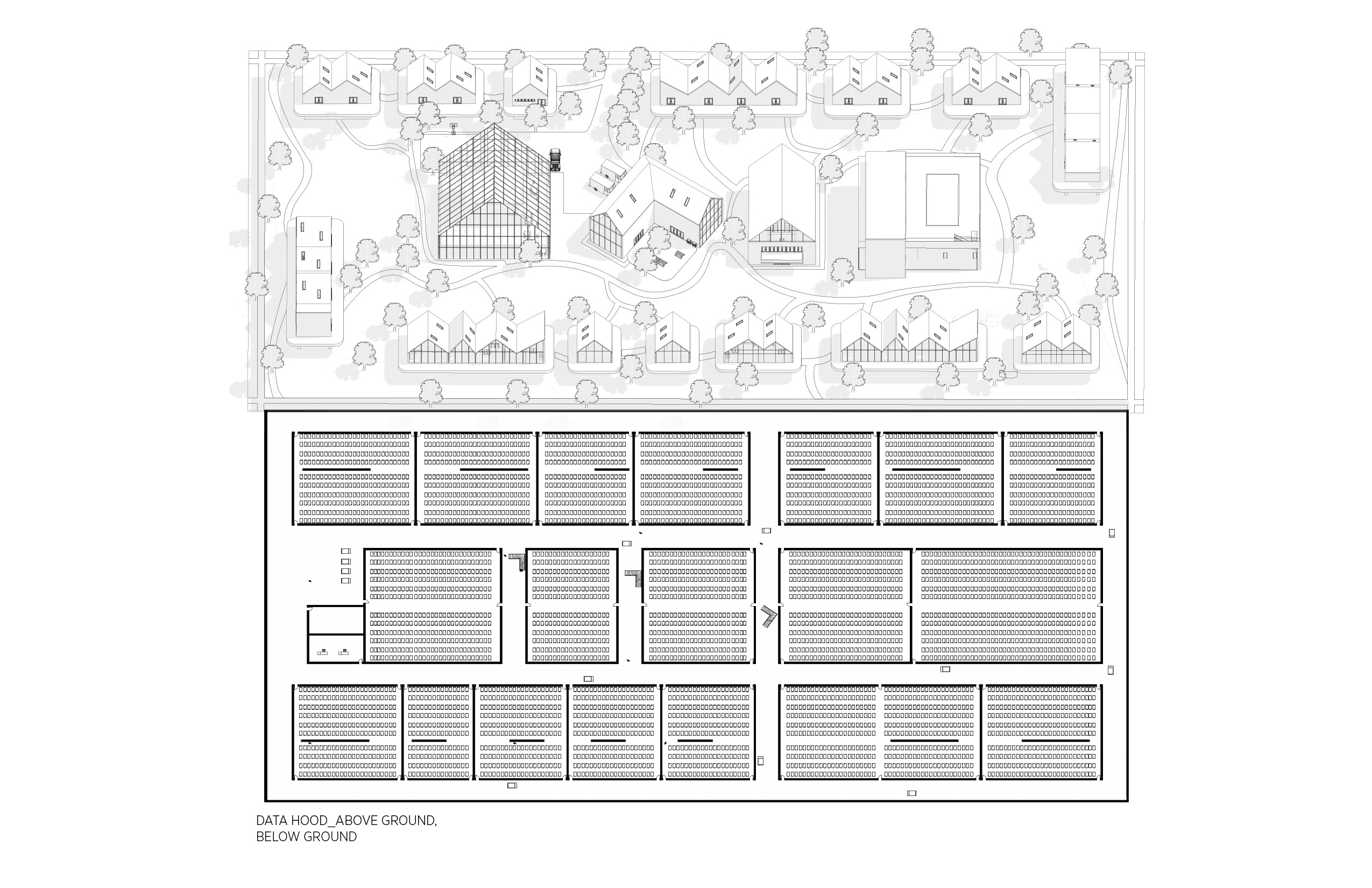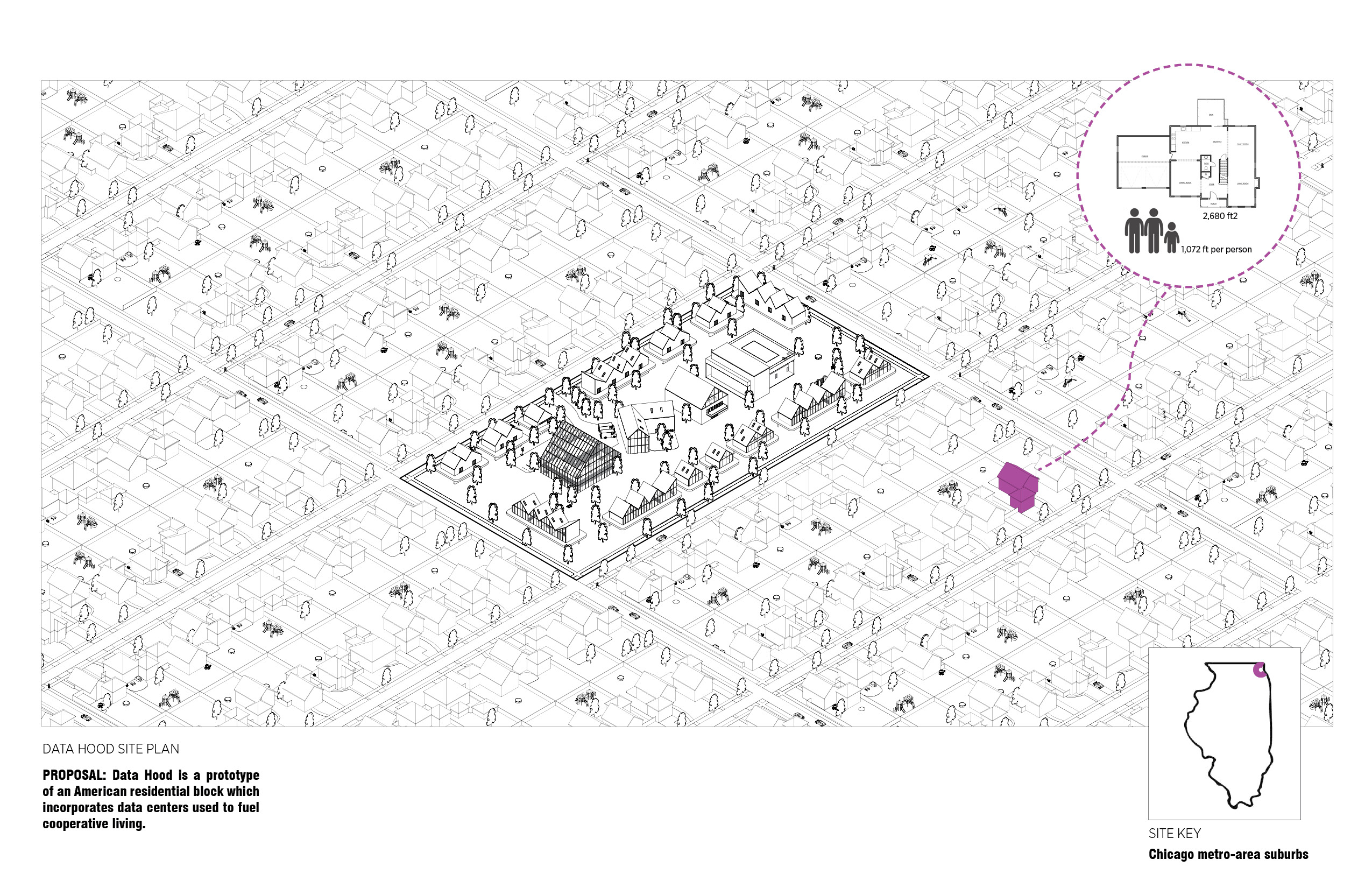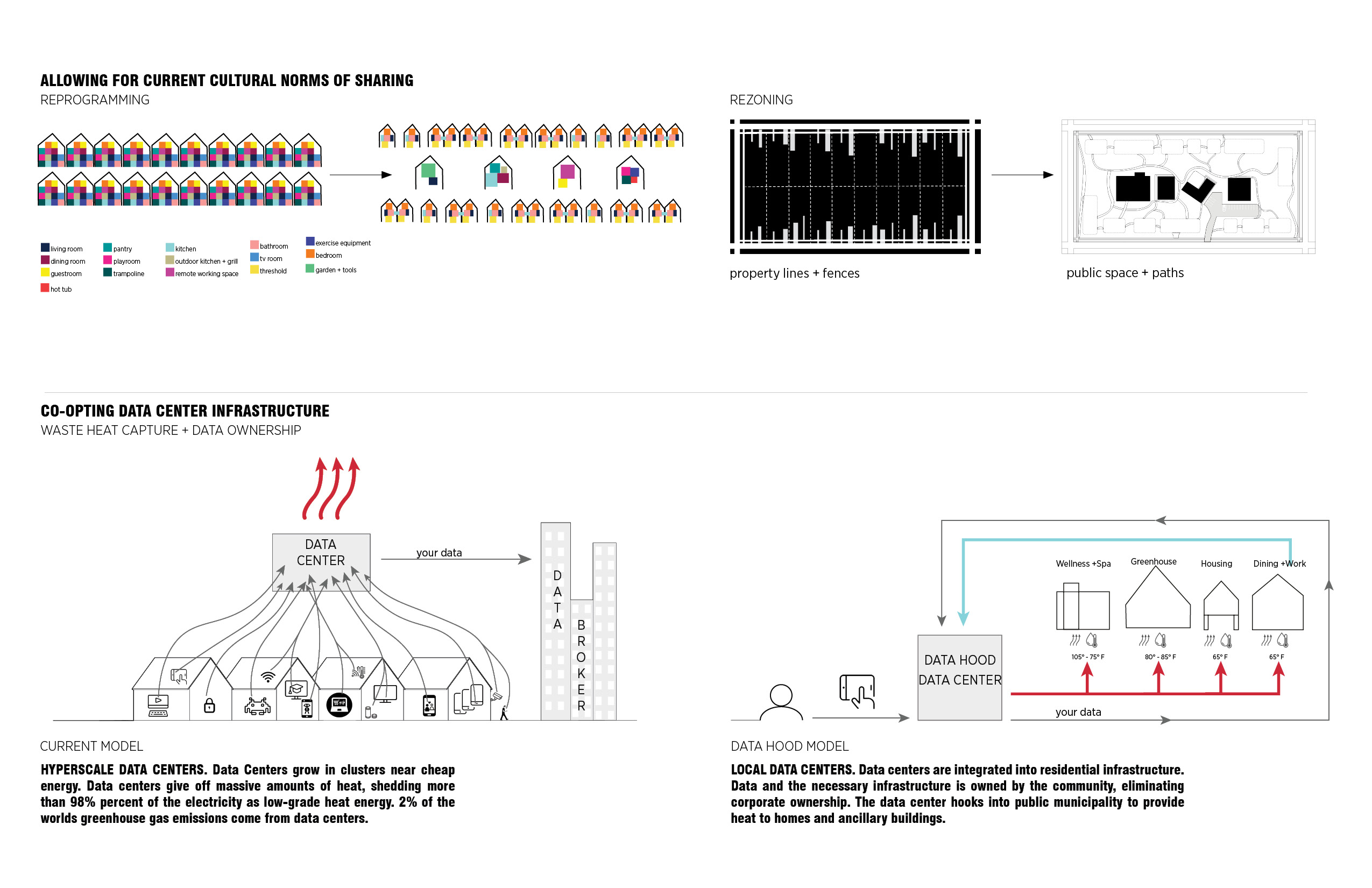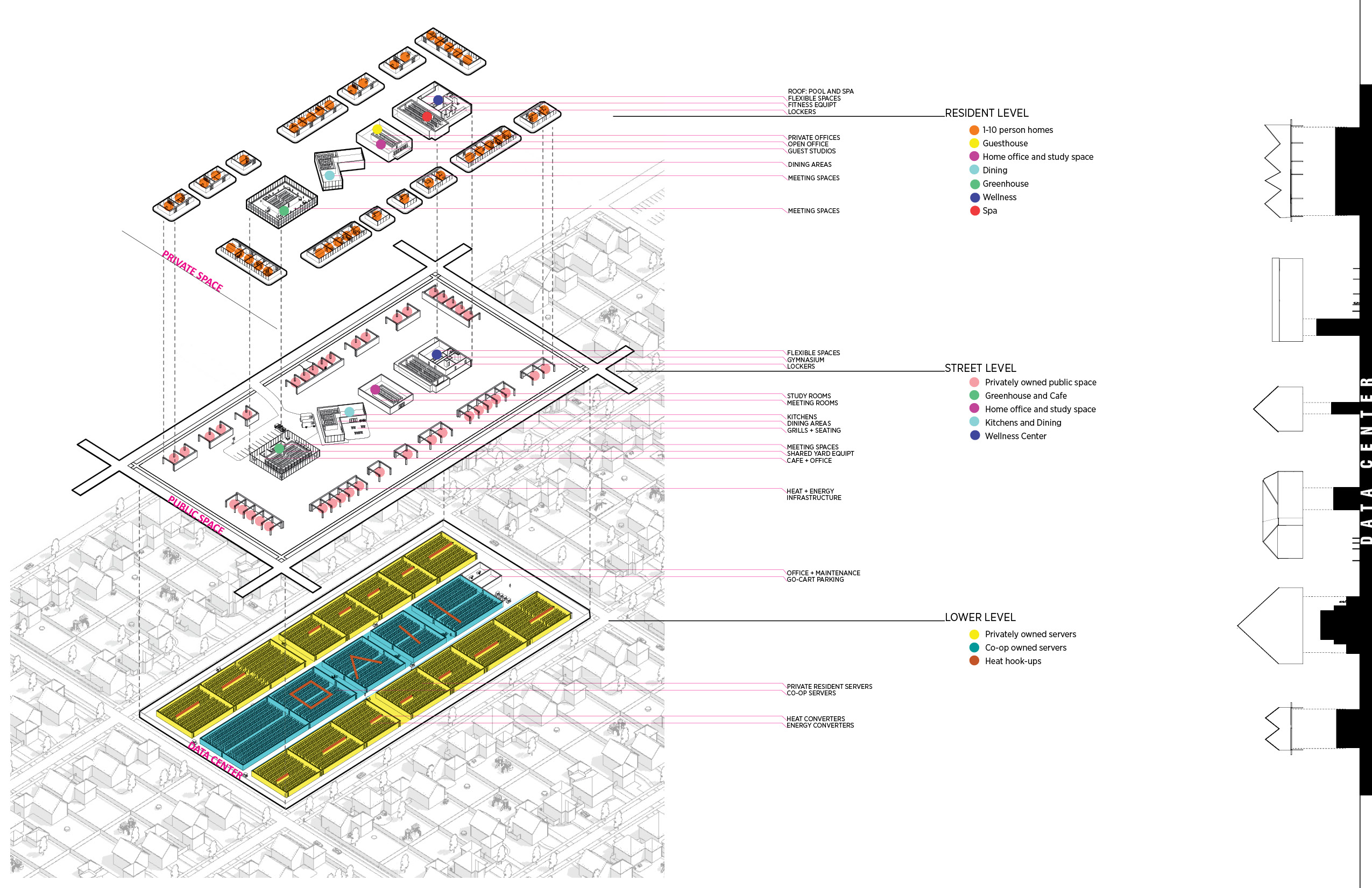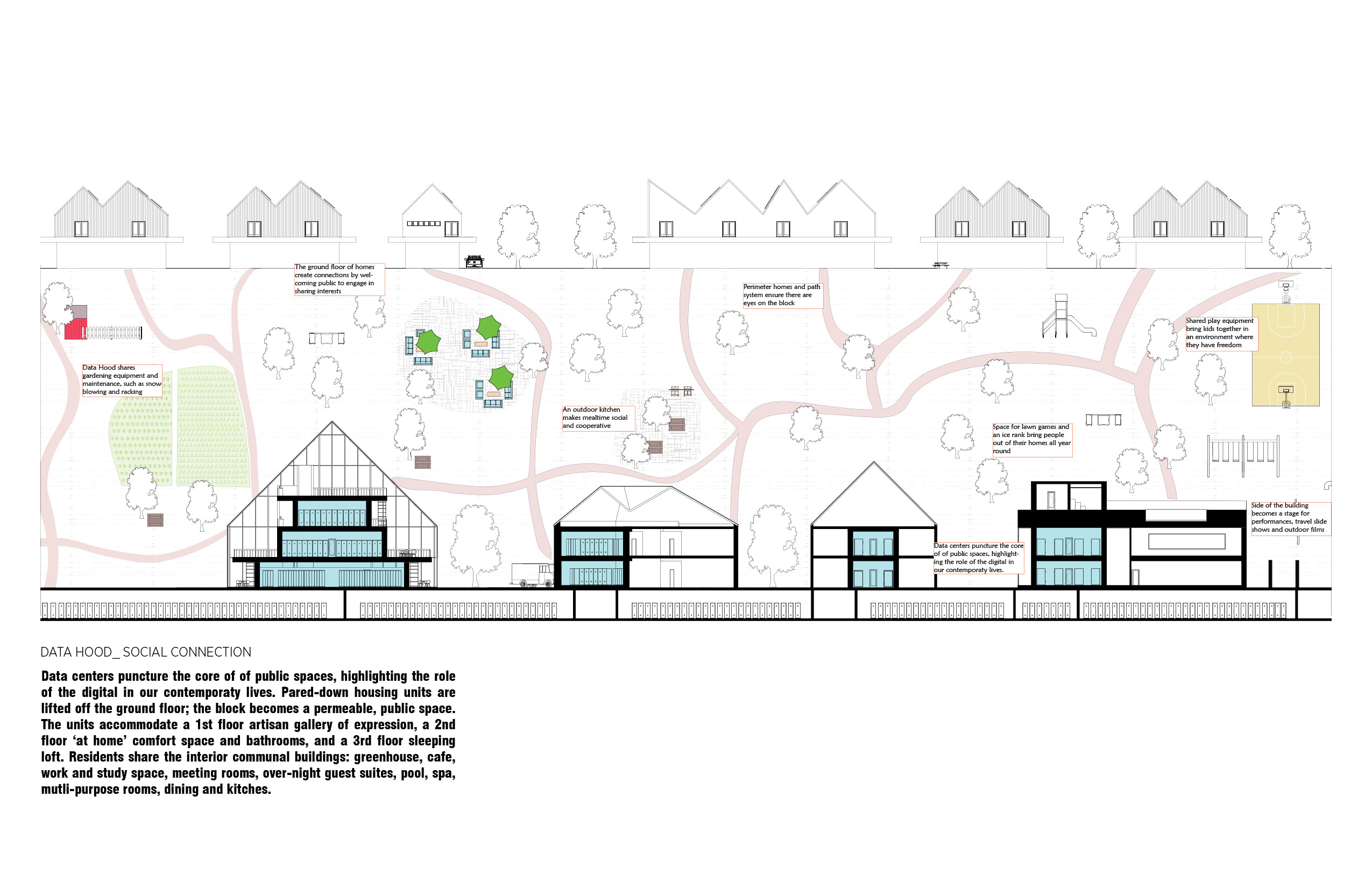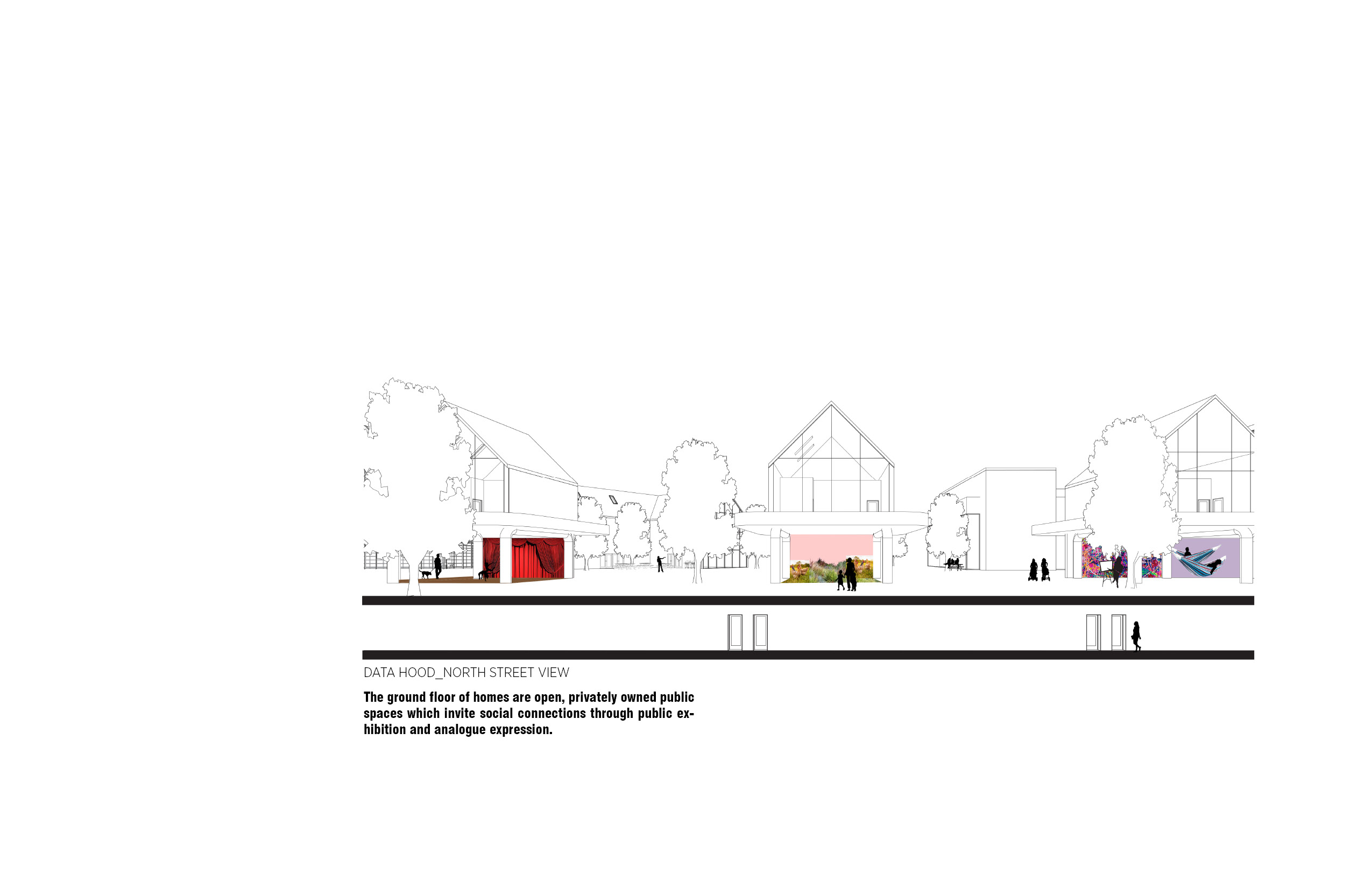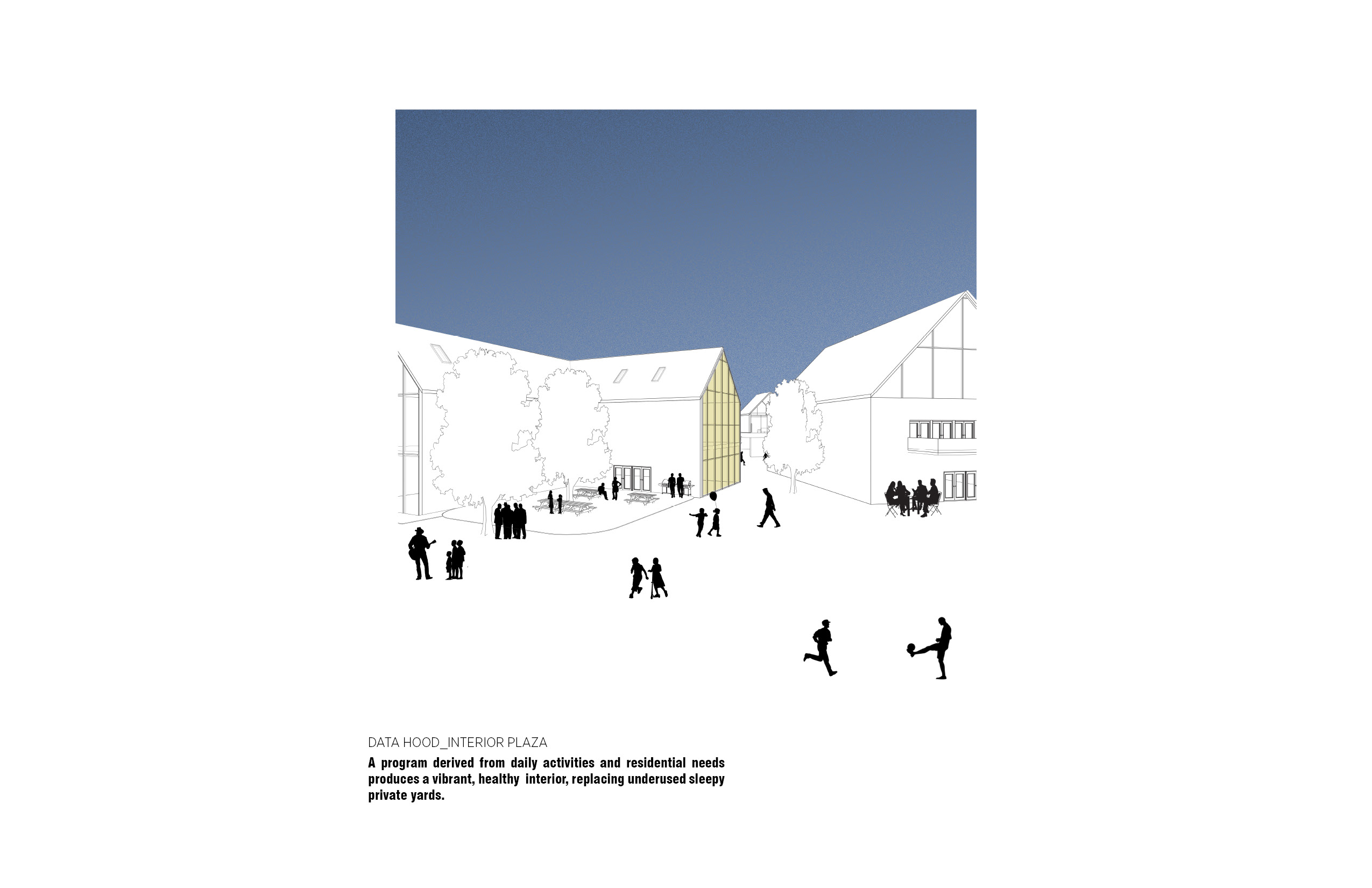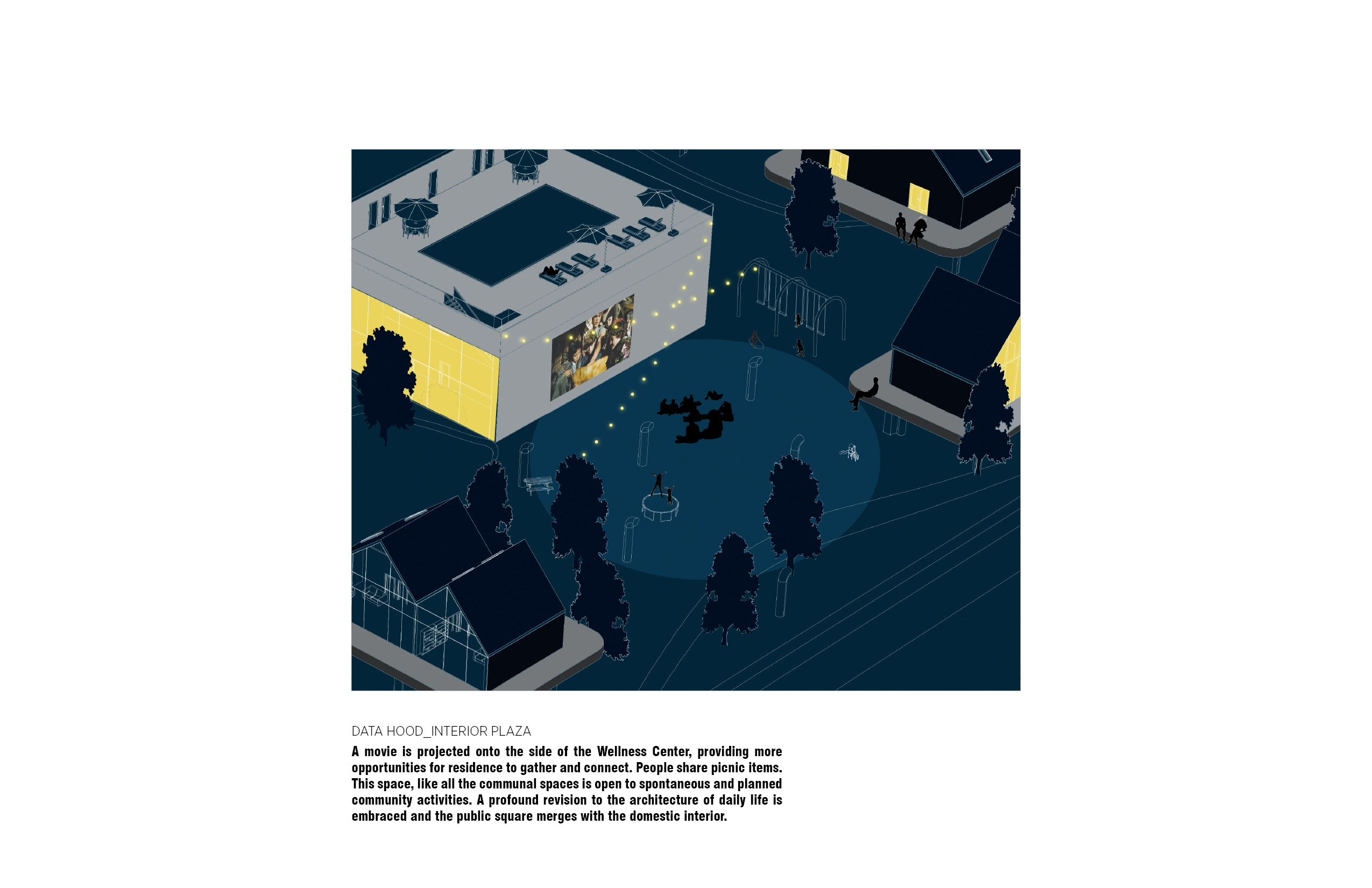Data centers are the largest cultural archives of our dreams, fears, histories and futures. They record, catalog and store our digital lives, but we don’t have access to them. Essential to our modern existence, the internet has changed the parameters around what we consider public and private. We acquiesce to being tracked and commoditized, in exchange for the convenience of buying groceries without going to the store, connecting with like-minded people without leaving the solitude of our home or planning a route without opening a map. While navigating our digital lives, we dissolve staunchly held boundaries of privacy. How can this new cultural normal inform the architecture that supports our daily lives?
Our reverence for data has spouted a new building typology: the hyperscale data center. We perceive data as stored in “the cloud.” The reality of digital storage requires mostly remote, gigantic, energy consuming facilities connected to our towns and cities through millions of miles of fiber optic cable. The spatial, economic and environmental ramifications of our culture’s data dependence is massive. It is predicted that the average American will have nearly 5,000 digital interactions per day by 2025. By that time, the world’s need for digital data storage could amount to nearly 175 zettabytes (175 followed by 21 zeros). The physical footprint needed to store that amount data is roughly the size of 21 Texases. By some estimates, data collection and the mining and selling of individuals’ data will be a $7.1 trillion industry in 2030. That means, your individual data will be worth $21,022 a year. Data is not going anywhere.
The digital environment has the power to connect us, but often fosters isolating physical environments. The Data Hood prototype uses data as a connector, powering neighborhood spaces. Once a data center is integrated into a residential block, the infrastructure is adapted and expanded to support new living scenarios and achieve resource efficiency. The digital produces a new collective, offering an alternative to the current suburban model. Outdated models of ownership and privacy are broken-up and vibrant, healthy neighborhood spaces for living, sharing, working, cooking and playing emerge. A profound revision to the architecture of daily life is embraced and the public square merges with the domestic interior.
